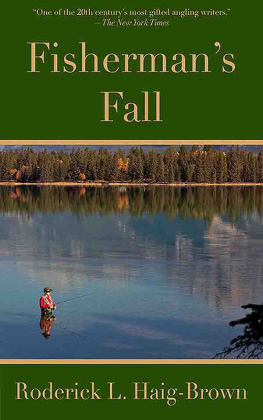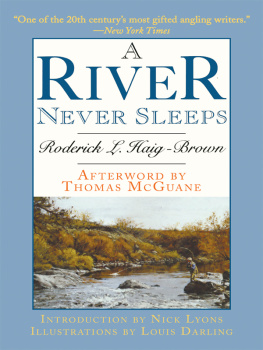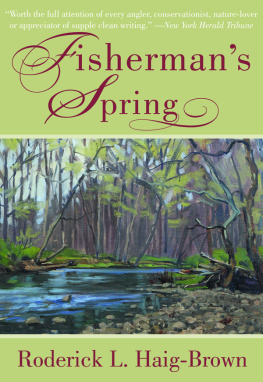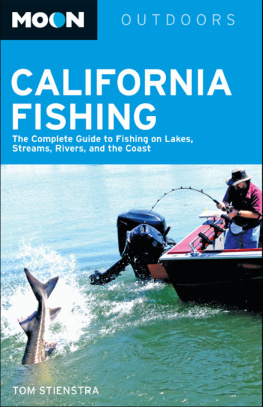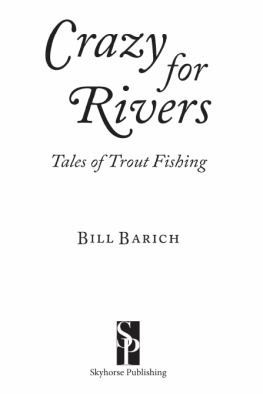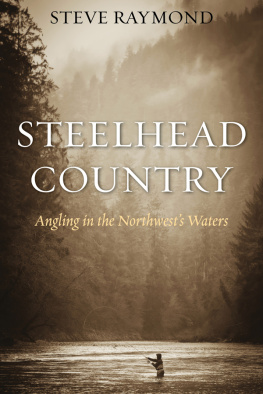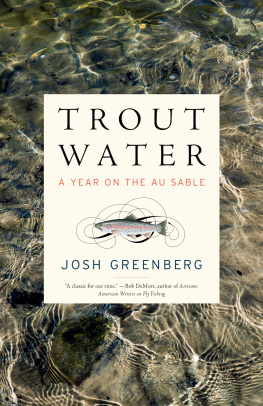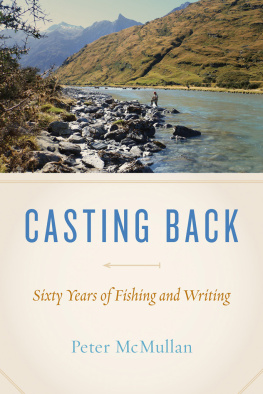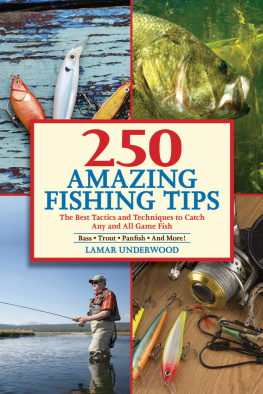Fishermans Fall
Also by Roderick Haig-Brown
A RIVER NEVER SLEEPS
RETURN TO THE RIVER
FISHERMANS SPRING
FISHERMANS SUMMER
FISHERMANS WINTER
RODERICK L. HAIG-BROWN
Fishermans
Fall

Copyright 1964, 1975, 2013 by Roderick L. Haig-Brown
All Rights Reserved. No part of this book may be reproduced in
any manner without the express written consent of the publisher,
except in the case of brief excerpts in critical reviews or articles. All
inquiries should be addressed to Skyhorse Publishing, 307 West
36th Street, 11th Floor, New York, NY 10018.
Skyhorse Publishing books may be purchased in bulk at special
discounts for sales promotion, corporate gifts, fund-raising, or
educational purposes. Special editions can also be created to
specifications.
For details, contact the Special Sales Department, Skyhorse
Publishing, 307 West 36th Street, 11th Floor, New York, NY 10018
or info@skyhorsepublishing.com.
Skyhorse and Skyhorse Publishing are registered trademarks of
Skyhorse Publishing, Inc., a Delaware corporation.
www.skyhorsepublishing.com
10 9 8 7 6 5 4 3 2 1
Library of Congress Cataloging-in-Publication Data is
available on file.
ISBN 978-1-62873-469-0
Printed in the United States of America
Contents
V. AQUARIUM NOTES
Preface to the 1975 Edition
Fall is the time that most of the migratory runs come back to the rivers here on the Pacific Coast of North America. All our five species of Pacific salmon come home then except for a few early-running chinooks and cohos. Most of the winter-spawning cutthroat trout run into the rivers then. The last of the summer-run steelhead and the first of the winter runs almost close the gap between themselves. It is the liveliest, most exciting time of all the year. Gulls and eagles, goldeneyes and mergansers, bears and mink and raccoons all come down to the rivers.
We know so much more about these migratory runs than we once did: where they go in the oceans, how they move through the ocean years, even a little of how they find their way back to their rivers of origin. We know something of their fresh-water needs and timing. We know that each species of fish that runs to a major watershed has many subraces that are peculiarly adapted, each to its own particular part of the watershed. We know that these wild stocks have wide genetic variations that can enable them to survive and rebuild in the face of disease or natural disaster. We know much more than thisabout survival rates and growth rates, the timing of downstream migration, the importance of feeding in the estuaries, and the rivers plume of fresh-water flow over salt. We know we can tamper with these things only at great risk to the survival of the runs.
How much more is there that we dont know and should have learned by now? In British Columbia we do not yet recognize fish production as one of the uses of fresh water, yet without fresh water we would have neither salmon nor trout nor char nor eulachons, and we should be much the poorer for that. We know that logging and most other forms of land use can be very damaging to watersheds unless carefully controlled, but we have not yet learned how to exercise this control. We know that hatcheries are of doubtful value at best, and ruinous at worst, and we know there are better and more productive alternatives. Yet we havent examined those alternatives thoroughly and we havent learned ways of putting them to work. We know that streams can be protected and their productivity substantially increased, but we havent as yet really learned how to go about it or cared to put real effort into the learning. We still trust engineers and technologists, or say we do, which might be all right if the fish responded to them with equal faith, but they dont. The fish respond to their own biology and to the fresh-and salt-water conditions that serve it.
We know so much and so little about the anadromous salmons and trouts. What we do know would be enough to save them if we put it to full use. In British Columbia, where we are not cursed with main stem dams on our major rivers, we could hope to return all our streams to full fertility and maximum production. It is a dream I like to dwell on when I am along the fall rivers. The salmon themselves clean and refresh the gravels of the stream bottom in their spawning activities; later their dead bodies feed fertility to the stream itself, benefiting all the creatures that use it, including their own progeny. There is a charm of interdependency in all this, some magic statement of unity and completeness that gives promise of a return to rivers of primitive abundance. It is more than a dream really. I believe we can achieve it, though there may have to be a little more order and regularity in the new abundance.
Roderick Haig-Brown
Campbell River, B.C.
April 1975
PART ONE
The Scene
1. Fall Defined
F ALL COMES QUITE GRADUALLY ON THE Pacific Coast of Canada, so gradually that one scarcely knows when or whether it has arrived. Sometimes a storm blows up from the south early in August, with a cold, wet rain that brings a subtle change. Yet it is certain the sun and the hot days will come again and perhaps hold on through most of September. If they do, there will be early frosts to turn the leaves and insist that fall is here. More often a storm around Labor Day brings the change. Again, the dry hot days may return after it, perhaps bringing woods closure and forest fires; but the change will be clear; fogs will force in from the ocean and the morning dew will be everywhere. With or without frost, the leaves will turn and begin to fall.
Fall is also in the return of the salmon to their riversnot, of course, in the early king salmon runs that come to a few rivers in May or the early running races of sockeye, but in the typical pink salmon runs that come in towards the end of July. With their coming the great fall movement to the coastal rivers begins. The big kings follow quickly, in August and September. A few cutthroat trout may have begun their movement even a little before the humpbacks. The cohos come in with the rains of September and October, the chum salmon are close behind them, and often with them, in October and November. Well before the last of the salmon is dead, it is December and unquestionably winter.
Fall fishing is a revival after the quieter times of summer. Cooler nights and the melt of early snowfall in the mountains bring falling water temperatures and rains freshen the streams. Shadows are longer, shielding the pools. The fish are more active and there is a touch of urgency about it all, a feeling that it cannot last very long so one had better get out and be doing. After all, there have been falls when the heavy rains came early and suddenly, the streams flooded and everything was over before it had started. Occasionally such memories trick me into going out and searching for runs before they have come in, using up fishing time that might have been better spent a week or two later. But I am not at all sure this is ever a matter for real regret, because there is always something around in the fall and one can come upon surprisesa few migrant fish running ahead of their time, an unexpected hatch that brings resident fish on the feed or even some phase of movement wholly unsuspected in other years. Few movements of wild creatures run to an exact timetable, year in, year out, and few are without their aberrant individuals; and few of us know our own familiar waters quite so well as we think we do.
Fall is almost everywhere a prime fishing time. In early fall the arctic grayling reaches his peak of fatness and condition and the lake trout move towards shallower water and their spawning. Brown trout and eastern brook trout are fall spawners, the cutthroat is chiefly a winter spawner; all three take on a special beauty of coloration as maturity approaches, echoing the reds and golds of the falling leaves. One may look for the bright and silvery immature fish among these and even prefer him, but his beauty is less vivid and he is not set apart as a sign of the season.
Next page
